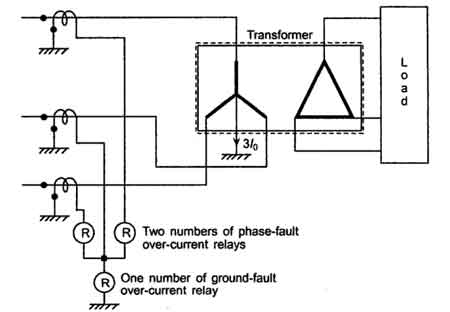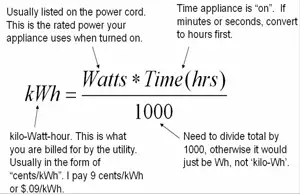Electrical Transformers
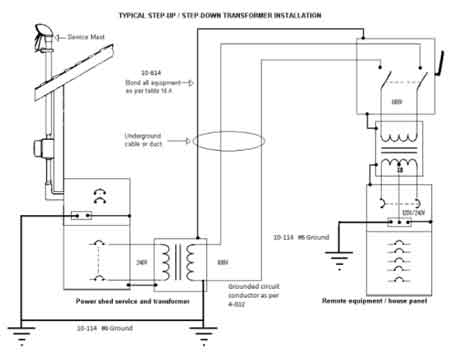
Transformer Grounding Diagram Explained
A transformer grounding diagram illustrates safe electrical connections, showing grounding methods, fault current paths, and protective bonding. It improves safety, stability, and code compliance in power systems across utility and industrial settings.
What is a Transformer Grounding Diagram?
A transformer grounding diagram is a schematic that shows how transformers are grounded to ensure safety, stability, and compliance with electrical codes.
✅ Illustrates grounding connections for fault protection
✅ Enhances power system reliability and stability
✅ Ensures compliance with NFPA, NEC, and IEEE standards
A transformer grounding diagram is a critical tool used in the design, installation, and maintenance of electrical systems. It provides detailed information on how a transformer is grounded to protect both the system and personnel from electrical faults. Proper grounding (sometimes referred to as "earthing") ensures that the neutral point of the system is stabilized, which is essential for preventing damage and enhancing system reliability. This article examines the role of a grounding diagram, its benefits during installation, and the potential problems it helps identify. Understanding a transformer’s basic design is the first step before studying grounding diagrams, since earthing methods depend on how windings and cores are constructed.
Electrical Transformer Maintenance Training
Substation Maintenance Training
Request a Free Training Quotation
Purpose of a Transformer Grounding Diagram
A grounding diagram serves a clear purpose: to demonstrate the configuration of the earthing system. Grounding controls fault currents when a ground fault occurs, directing the current safely into the earth while stabilizing system voltage by holding the neutral point at ground potential. In high-voltage systems, this function is indispensable. A well-drawn grounding diagram allows engineers to predict system performance during faults and to design protective devices accordingly. In one real-world example, an industrial facility with a 13.8 kV substation experienced damaging neutral overvoltages. Reviewing the grounding diagram revealed an undersized earthing conductor. Once corrected, neutral voltages dropped dramatically during faults, preventing relay misoperations and ensuring compliance with IEEE Std. 142, known as the Green Book. When specifying equipment, transformer grounding diagrams should be reviewed along with transformer sizing calculations to ensure both electrical performance and safety compliance.
Common Grounding Problems in Transformers
Like any part of an electrical system, earthing can suffer from weaknesses that a diagram helps identify. Poor connections at the neutral point, incorrectly sized conductors, or failures in earthing transformers within ungrounded systems can all create instability and hazards. Improper earthing often leads to elevated voltages, increasing the risk of equipment failure. Engineers commonly use calculation checks to avoid these pitfalls. For example, when sizing a neutral grounding resistor (NGR), the fault current is determined using the formula:
I = V / R
where I is the fault current, V is the line-to-neutral voltage, and R is the chosen resistance. Selecting improper values may result in dangerously high fault currents or ineffective protection. In distribution networks, earthing is critical for single phase transformer connections, ensuring system stability and reducing the risk of neutral shift.
Key Components in a Grounding Diagram
Every transformer grounding diagram shares certain key components. These include the neutral point where transformer windings connect to ground, the grounding electrode itself, and the conductors that form the fault current path. In delta-connected systems, the diagram often shows an earthing transformer—such as a zigzag configuration—that provides a return path for ground faults where a direct neutral does not exist. Technicians use these diagrams not only to ensure correct installation but also to verify the system's condition during periodic maintenance. Industry standards such as NEC Article 250 and IEEE Std. 81 recommends testing methods, including fall-of-potential and clamp-on ground resistance tests, often with a goal of less than 25 ohms of resistance, or under 5 ohms for critical substations. For power quality and protection, instrument transformers rely on correct earthing of secondary windings to prevent dangerous overvoltages.
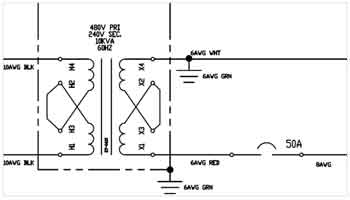
One of the two output conductors can be connected to ground, designating it as the neutral, while the other remains the energized line.
Types of Transformer Grounding Configurations
There are several grounding configurations that engineers may select, and diagrams help distinguish their applications. Solid grounding directly connects the neutral to earth, creating a low-impedance path that ensures fast fault clearing but results in high fault currents. Resistance earthing, whether low or high impedance, introduces a resistor between neutral and ground, thereby limiting fault currents to safer levels. High-resistance grounding, in particular, is effective for reducing arc flash hazards but requires careful insulation coordination. Zigzag earthing transformers, commonly applied to delta systems, provide a path for zero-sequence currents while maintaining balanced voltages.
Each method carries its own benefits and limitations:
-
Solid grounding enables fast fault clearing but can produce destructive current magnitudes.
-
Low-resistance grounding provides balance by allowing fault detection with limited current.
-
High-resistance grounding minimizes current and arc energy but requires system insulation upgrades.
-
Zigzag grounding offers flexibility in ungrounded systems, providing a fault current path without altering voltage balance.
Engineers also review earthing considerations when installing dry type transformers, especially in indoor locations where insulation and fault paths must be tightly controlled.
Comparison of Transformer Grounding Methods
| Grounding Method | Advantages | Disadvantages | Typical Applications |
|---|---|---|---|
| Solid | Fast fault clearing; stable voltage reference | High fault current can damage equipment | Utilities, high-voltage transmission |
| Low-Resistance | Limits current while allowing detection; protects equipment | Resistors require maintenance; moderate fault currents remain | Industrial distribution systems |
| High-Resistance | Reduces arc flash risk; minimizes equipment stress | Requires higher insulation; limits fault detection sensitivity | Sensitive process plants, mining, and data centers |
| Zigzag Grounding Transformer | Provides a path for zero-sequence currents in delta systems; maintains voltage balance | Added cost and complexity; not needed if neutral is already available | Delta-connected systems, substations |
Installation, Testing, and Maintenance of Earthing Systems
Beyond initial installation, grounding diagrams play an important role in maintenance. They help technicians trace connections, verify the integrity of earthing, and plan inspections of conductors and electrodes. For example, clamp-on resistance testers can confirm whether bonding conductors remain intact, while step-and-touch potential measurements can identify dangerous ground voltage gradients. These checks help detect weaknesses before they evolve into failures. Proper earthing plays a major role in the accuracy of a current transformer, since any imbalance in the fault return path can distort measurement signals. In low-voltage control circuits, a control transformer often requires careful earthing practices to prevent nuisance faults and ensure safe operation of sensitive equipment.
Risks, Failure Modes, and Protective Strategies
Grounding diagrams also act as tools for anticipating risks. If a delta system is shown without a grounding transformer, this may indicate that no proper return path for ground faults exists. Such omissions can lead to transient overvoltages, ferroresonance, or neutral shift, all of which increase stress on transformer insulation and protective devices. IEEE Std. C62.92 notes that poorly configured earthing systems may even amplify switching surges. By identifying these risks in the design phase, diagrams help prevent downtime, damage, and hazards.
Why Grounding Diagrams Matter
Ultimately, a transformer grounding diagram is more than a schematic—it is a safeguard for safe and efficient operation. It documents how the transformer is connected to ground, provides the reference for installation, and guides maintenance practices throughout the system’s life. By ensuring correct earthing, these diagrams stabilize system voltage, control fault currents, and uphold both personnel safety and equipment reliability. When integrated with proper testing, adherence to NEC, IEEE, and IEC standards, and ongoing maintenance, grounding diagrams become a cornerstone of electrical safety engineering.
Related Articles
Download Our FREE Electrical Transformers Handbook

Electrical Transformer Testing Handbook, Vol. 6
The better the efficiency of a transformer, the better your investment.
The Electrical Transformer Testing Handbook, Volume 6 provides a comprehensive guide to the testing, diagnosis, and maintenance of electrical transformers. This volume is designed for engineers, technicians, and maintenance professionals who are responsible for ensuring the reliability and safe operation of transformers in power generation, transmission, and distribution systems. Whether you are working in a utility setting, industrial plant, or with renewable energy systems, this handbook offers essential insights and practical advice for all stages of transformer testing and maintenance.
In this edition, we explore the various methods and techniques used to test transformer performance, including insulation resistance testing, turns ratio testing, winding resistance measurements, and dielectric tests. We also cover key diagnostic procedures such as transformer oil analysis and partial discharge testing, which help identify early signs of damage or deterioration, enabling proactive maintenance and minimizing the risk of failure.
Volume 6 delves into transformer fault detection, performance evaluation, and troubleshooting, providing a detailed understanding of common transformer issues such as winding faults, core saturation, and insulation breakdown. The handbook also addresses the latest advancements in transformer testing technologies, including online monitoring systems and automated diagnostic tools that enhance testing accuracy and efficiency.
Latest Electrical Transformers Articles

What Is The Function Of Torus Isolation Transformer
What Is the Function of Torus Isolation Transformer? It delivers galvanic isolation, power conditioning, EMI/RFI noise filtering, surge protection, and ground-loop breakup for cleaner audio, safer equipment, and stable home theater and pro AV systems.
What Is the Function of Torus Isolation Transformer?
Provides galvanic isolation to cut noise, break ground loops, and condition AC power for safer, cleaner performance.
✅ Galvanic isolation to prevent shock and equipment damage
✅ Filters EMI/RFI and reduces hum, hiss, and line noise
✅ Breaks ground loops for cleaner audio and video
A torus isolation transformer is a crucial component in electrical systems, providing safety and efficiency by isolating different sections of a circuit. Its unique design, characterized by a toroidal (doughnut-shaped) core, enables it to handle high power loads while minimizing energy loss. By offering galvanic isolation, this transformer protects sensitive equipment from electrical surges and noise, ensuring stable operation in critical environments. Understanding the function and significance of torus isolation transformers is essential for engineers and technicians working with electrical systems, as it plays a vital role in enhancing system reliability and safety. For foundational context, see this overview of what a transformer is and how its core principles inform isolation design.
Electrical Transformer Maintenance Training
Substation Maintenance Training
Request a Free Training Quotation
Electrical Isolation for Safety
One of the most significant features of a torus isolation transformer is its ability to provide electrical isolation between the power source and the connected equipment. This isolation is crucial for safety, as it helps protect users and equipment from the dangers of electric shock. Whether in industrial environments, medical settings, or home theatres, the transformer ensures that electrical faults or surges on the input power line do not harm sensitive devices. By separating the primary and secondary windings, the transformer creates a barrier that prevents faults from transferring to connected equipment, making it an essential component in systems where isolated power is necessary. For a deeper explanation of isolation principles, consult this isolation transformer guide that outlines operation, hazards, and typical applications.
Noise and Interference Reduction
In addition to safety, torus isolation transformers are designed to filter out noise and electromagnetic interference. In high-performance applications such as audio systems or home theatre setups, minimizing interference is vital for ensuring clear signals and high-quality performance. Electrical noise from power lines or nearby equipment can create distortion, affecting everything from sound quality to video resolution. With the toroidal core’s ability to block unwanted frequencies, these transformers contribute to reducing the noise floor and improving the overall user experience, particularly in environments where audio and audio-video signals need to be crystal clear. Comparing transformer types can clarify why toroidal designs exhibit lower radiated fields and audible hum in sensitive AV chains.
Voltage Regulation for Stable Performance
Another key function of a torus isolation transformer is its ability to stabilize voltage levels across the system. Voltage fluctuations can lead to unreliable performance or even damage to sensitive equipment. By regulating the input and output voltages, the transformer ensures that devices receive a constant, stable voltage, free from spikes or drops that could otherwise affect their operation. This feature is especially beneficial in high-performance systems, where voltage stability is critical to maintaining the desired functionality of complex equipment such as control systems or medical devices. Fundamentally, a transformer is a device that increases or decreases voltage and this capability supports consistent downstream performance.
Surge Protection for Sensitive Equipment
Torus isolation transformers also provide essential surge suppression, protecting devices from the damaging effects of power surges and spikes. Electrical surges, often caused by lightning, power outages, or faulty equipment, can cause irreparable damage to sensitive devices. By absorbing and redirecting excess voltage, the transformer prevents surges from reaching the connected equipment, ensuring longevity and reliable operation. For instance, in medical isolation transformers, surge protection is crucial for preventing harm to life-saving devices like ventilators or patient monitors. For broader context on system behavior, review what transformers do to understand how isolation complements surge suppression and grounding strategies.
Enhanced Equipment Longevity
Power Conditioning for Critical Systems
Torus isolation transformers are particularly favoured in settings where the quality of electrical power directly impacts the operation of sophisticated equipment. The ability to provide power conditioning through stable voltage regulation and noise reduction makes them invaluable in critical environments, such as hospitals, laboratories, and recording studios. Whether it's controlling the output voltage to a piece of sensitive medical machinery or ensuring the clarity of an audio-video signal, the transformer’s benefits extend far beyond basic electrical isolation. In smaller installations, a single-phase power transformer can provide isolation and conditioning while keeping footprint and cost manageable.
Frequently Asked Questions
What is a torus isolation transformer, and how does it work?
A torus isolation transformer is a specialized type of transformer that uses a toroidal (doughnut-shaped) core. This design allows for more compact construction and efficient operation compared to traditional transformers. The core is wound with wire in a continuous loop, which reduces energy loss and provides better electromagnetic shielding. The transformer works by transferring electrical energy from the primary coil to the secondary coil through magnetic induction, creating an isolated power source. This isolation prevents electrical faults or surges from transferring between the primary and secondary circuits, enhancing the safety of connected devices. Related background on different types of transformers helps distinguish toroidal isolation units from autotransformers and distribution designs.
How does a torus isolation transformer improve electrical safety?
What role does a torus isolation transformer play in noise reduction and interference filtering?
Why is voltage regulation important in a torus isolation transformer, and how does it work?
How does a torus isolation transformer contribute to the longevity and reliability of sensitive equipment?
Related Articles
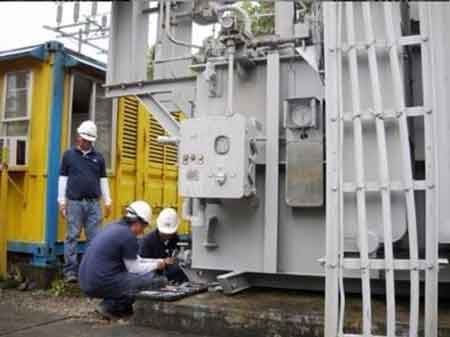
Transformer Types and Their Applications
Transformer types include power, distribution, and instrument units, each designed for specific roles. Step-up, step-down, single-phase, and three-phase transformers provide voltage control, energy efficiency, and electrical safety across residential, industrial, and utility systems.
What are the Transformer Types?
Transformer types are classifications of electrical transformers based on their purpose, design, and application. They vary by structure and use in power systems:
✅ Power, distribution, and instrument transformers for specific functions
✅ Step-up, step-down, single-phase, and three-phase designs
✅ Applications in residential, industrial, and utility networks
Electrical Transformer Maintenance Training
Substation Maintenance Training
Request a Free Training Quotation
Various transformer types are indispensable components in modern electrical systems. By examining the various types of transformers, we gain insights into their diverse applications and functionality. For example, power and distribution transformers ensure the effective transmission and distribution of electrical energy, while isolation transformers provide safety measures for users and devices. Autotransformers present an efficient alternative for particular applications, and step-up and step-down transformers cater to the voltage needs of various devices. Three-phase transformers enable efficient power distribution in industrial and commercial settings, and single-phase transformers are designed for residential use. As we expand our understanding of these essential components, we can develop more advanced and efficient electrical systems to benefit the world.
Transformer Types Comparison Table
| Transformer Type | Primary Purpose | Common Applications |
|---|---|---|
| Power Transformer | Step up or step down voltage at high levels | Generating stations, transmission substations |
| Distribution Transformer | Reduce voltage for end users | Residential neighborhoods, commercial areas |
| Isolation Transformer | Provide electrical isolation and noise reduction | Sensitive electronics, medical/lab equipment |
| Autotransformer | Compact, efficient voltage regulation | Voltage adjustment, impedance matching |
| Step-Up Transformer | Increase voltage for long-distance transmission | Power plants, transmission lines |
| Step-Down Transformer | Decrease voltage for safe device use | Industrial machines, appliances, local grids |
| Three-Phase Transformer | Stable AC supply and efficient power distribution | Industrial facilities, commercial systems |
| Single-Phase Transformer | Supply electricity in single-phase systems | Residential power, small businesses |
| Toroidal Transformer | High efficiency, low noise, minimal interference | Audio equipment, sensitive electronics |
| Instrument Transformer | Scale down current/voltage for measurement | Monitoring, metering, protective relays |
In the modern electrical landscape, transformers play a critical role in transmitting, distributing, and utilizing electrical energy. These devices transfer AC power from one circuit to another by altering voltage and current levels. To fully understand their applications and functionality, it is crucial to delve into the concept of different transformer types. In this article, we will explore the various types of transformers and their uses and incorporate additional keywords to provide a clearer understanding of their operations.
Power and Distribution Transformers
Power transformers, typically large, are employed in generating stations or transmission substations. They manage high voltage levels and substantial amounts of electrical energy. Their primary role is to step up the voltage produced by power plants before transmitting it over long distances, which minimizes energy loss in the form of heat. Moreover, they can step down the voltage when necessary, such as at the receiving end of a transmission line.
Distribution transformers, conversely, are utilized in the final stages of the electrical distribution network. They lower the voltage to levels suitable for commercial and residential applications. Unlike power transformers, they are smaller, handling lower voltages, making them ideal for deployment in densely populated areas.

Isolation and Autotransformers
Isolation transformers provide electrical isolation between two circuits. These transformers feature primary and secondary windings that are not electrically connected, creating a protective barrier against electric shocks. Furthermore, they help safeguard sensitive electronic devices from voltage surges or electrical noise by ensuring they are connected to the secondary winding, thereby avoiding any direct connection to the primary side.
Auto transformers are distinct from conventional transformers because they possess only a single winding shared by the primary and secondary sides. This configuration makes them more compact, energy-efficient, and cost-effective, rendering them perfect for specific applications such as voltage regulation or impedance matching. In addition, the number of turns in the single winding determines the ratio of the input and output voltages.
Step-Up, Step-Down, and Phase Transformers
Step-up transformers and step-down transformers are designed to modify voltage levels. A step-up transformer elevates the output voltage from the input voltage, resulting in a higher voltage level. On the other hand, a step-down transformer diminishes the output voltage, making it suitable for devices requiring lower voltage levels. Both types of transformers are instrumental in tailoring electrical systems to accommodate the requirements of various devices and appliances.
Three-phase transformers cater to three-phase electrical systems, predominantly found in industrial and commercial environments. These transformers comprise three single-phase transformers interconnected in specific configurations, such as delta or wye. They facilitate efficient power distribution and minimize voltage fluctuations within the system, ensuring a stable supply of AC power to the connected devices.
Single-phase transformers are utilized in single-phase electrical systems, with their primary and secondary windings connected in series or parallel configurations, depending on the desired output voltage. These transformers are commonly employed in residential settings, providing a reliable source of power to household appliances.
Toroidal and Instrument Transformers
Toroidal transformers, named after their doughnut-like torus shape, are known for their exceptional efficiency and minimal electromagnetic interference. In addition, their compact size and low noise output make them the go-to choice for audio equipment and other sensitive electronic devices.
Measurement instruments play a crucial role in monitoring and maintaining electrical systems. Transformers, especially instrument transformers, are key components in this process. Instrument transformers are specifically designed for use with measurement instruments, allowing them to operate at lower voltage and current levels while still providing accurate readings. This helps maintain a safe working environment for technicians and engineers with high-voltage electrical systems.
How Transformers Work
The process through which a transformer transfers electrical energy relies on the principle of electromagnetic induction. This involves winding transformers with primary and secondary windings around a common magnetic core. When an AC voltage is applied to the primary winding, it generates a magnetic field that induces a voltage in the secondary winding, effectively transferring electrical energy between circuits.
Primary and secondary windings in transformers are essential in achieving the desired voltage conversion. The number of turns in these windings determines the voltage transformation ratio, directly affecting the output voltage provided to the secondary side of the transformer. By selecting the appropriate winding configuration and number of turns, engineers can design transformers tailored to specific applications and requirements.
Conclusion
Understanding the various transformer types and their applications is critical for efficient and safe electrical systems. Power and distribution transformers facilitate the effective transmission and distribution of electrical energy, while isolation transformers offer protection against potential electrical hazards. Autotransformers provide cost-effective solutions for niche applications, while step-up and step-down transformers cater to diverse device requirements. Three-phase transformers promote efficient power distribution in commercial and industrial settings, whereas single-phase transformers serve residential applications. Additionally, toroidal transformers are favored in sensitive electronic devices and audio equipment due to their compact design and minimal interference.

Flyback Circuit Primary Voltage Explained
Flyback circuit primary voltage determines peak stress, magnetizing current, and energy transfer; governed by duty cycle, input range, turns ratio, leakage inductance, and snubber/clamp networks for MOSFET protection and EMI control.
What Is Flyback Circuit Primary Voltage?
The voltage across the primary winding, set by input, duty cycle, and turns ratio; it dictates peak stress and energy.
✅ Sets MOSFET Vds stress and required clamp/snubber rating.
✅ Depends on Vin range, duty cycle, turns ratio, leakage L.
✅ Influences magnetizing current, EMI, and core saturation.
Flyback Circuit Primary Voltage - In modern electronics, the flyback circuit has become indispensable for various power supply systems due to its unique ability to control and distribute power efficiently. Its importance lies in applications that require the separation of energy between primary and secondary sides of the transformer to generate multiple output voltages. This mechanism is essential for creating compact, efficient power supplies for devices ranging from televisions and computers to industrial machinery, enabling improved performance and energy conservation. For readers new to transformer fundamentals, see what a transformer is to ground this flyback discussion in core concepts.
Electrical Transformer Maintenance Training
Substation Maintenance Training
Request a Free Training Quotation
A flyback circuit, commonly used in switch-mode power supplies, is essential for controlling power efficiently across multiple outputs while reducing energy loss. Understanding the primary voltage is crucial for electrical professionals, as it influences the performance of power supply systems across various applications, including televisions, industrial machines, and computer displays. This type of converter stores energy in its transformer before transferring it, providing benefits like improved control over output power, reduced voltage drop, and enhanced power efficiency. This knowledge is particularly valuable for electrical workers, as it aids in optimizing performance and preventing damage to sensitive components. To appreciate how energy transfer supports real-world loads, review what transformers do and how those roles map to primary and secondary behavior.
The Fundamentals of Flyback Circuits and Transformers
At its core, it operates similarly to a buck-boost converter but uses a flyback transformer to store energy. The transformer’s primary winding is connected to the DC power source, and as current flows through, it generates a magnetic field. This field stores energy in the core of the transformer until the switch turns off. Once this happens, the energy stored is transferred to the secondary winding, inducing power that is then delivered to the output. This design allows for flexibility in achieving multiple outputs from a single circuit, enabling it to meet the diverse requirements of various electronic devices. This behavior reflects the broader principle that a transformer increases or decreases voltage depending on turns ratio and timing in the flyback topology.
In these circuits, the primary winding and secondary winding play significant roles in energy management. The primary side is responsible for energy intake, while the secondary side directs the energy towards the outputs. The turns ratio between the primary and secondary windings determines the output power, a feature particularly advantageous for switch mode power supplies as it allows for the adjustment of power levels with precision. Selecting an appropriate core, gap, and turns ratio also depends on understanding transformer types that suit isolation, power level, and frequency requirements.
How Flyback Controllers Regulate the System
A controller governs the duty cycle of the circuit, determining the length of time the primary winding receives energy. By adjusting the duty cycle, the controller regulates the amount of energy stored in the transformer, ensuring it is optimally transferred to the secondary side. This process helps maintain stable output, protecting the connected components from power fluctuations. In coordinated control systems, designers may pair regulation ICs with auxiliary supplies derived from control transformers to stabilize housekeeping rails and startup biasing.
Controllers are critical for applications where multiple outputs are required from a single power supply, as they provide precise control over each power output. For instance, in scenarios where different paths need varied power levels, the controller ensures that each secondary winding output receives the appropriate power based on the transformer’s turns ratio.
Components and Functionality of Flyback Converters
The converter’s design includes an output diode and an output capacitor, which together help manage the flow of energy once the transformer’s magnetic field collapses. When the switch opens, current flows from the primary winding to the secondary winding, inducing a power in the secondary side. The output diode becomes forward-biased, allowing current to pass through, charging the output capacitor and supplying energy to the load. These functions mirror practices found in larger electrical power transformers where rectification and filtering shape usable DC for downstream stages.
One key aspect of converters is their capability to store energy within the magnetic field before transferring it. This energy storage function enables it to operate at a high level of efficiency. Moreover, the output diode safeguards by blocking any reverse current that could otherwise interfere with the transformer’s performance.
Addressing Voltage Drop and Ensuring Safety
Voltage drop is a common issue, particularly in high-frequency applications. In these cases, limiting the power spike by providing a path for the excess current. This path prevents damage to components, such as the switching transistor, by ensuring the induced power remains within safe limits. For a concise refresher on core operation, consult electrical transformers explained to connect snubber design back to transformer fundamentals.
For electrical workers, understanding the significance of the circuit’s primary voltage is essential for designing reliable power supply systems. This knowledge enables technicians to troubleshoot potential issues effectively, ensuring that energy is transferred efficiently without risking component failure.
Flyback Circuit Applications and Practical Benefits
Flyback circuits are integral to various technologies, including low-voltage power supplies, where compact and efficient energy transfer is paramount. Their ability to produce multiple outputs makes them highly versatile, from domestic electronics to industrial power systems. Electrical professionals who work with converters benefit from understanding the critical role of primary and secondary windings, as well as the importance of the controller and output diode in managing output power.
Flyback circuits are invaluable for their ability to convert and control power across multiple outputs effectively. Electrical workers who are familiar with their primary voltage management can optimize performance, prevent unnecessary power drop, and ensure the longevity of essential components. Mastering the intricacies, including the role of the duty cycle, input power management, and turns ratio, ultimately enhances efficiency and reliability in electronic power supply applications.
Related Articles
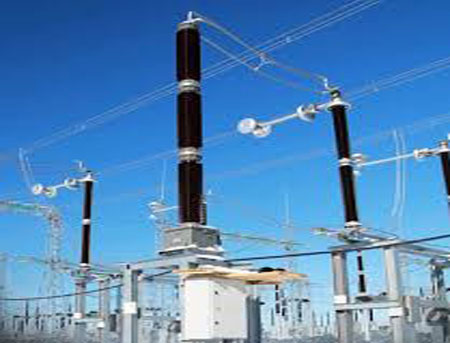
Capacitor Voltage Transformer Explained
A Capacitor Voltage Transformer (CVT) steps down high-voltage transmission levels for protection, metering, and control. Using a capacitive divider and electromagnetic unit, CVTs provide accurate, safe monitoring in power systems and substations.
What is a Capacitor Voltage Transformer?
A Capacitor Voltage Transformer (CVT) is a high-voltage device that utilizes a capacitor divider and electromagnetic converter to safely scale down transmission voltages for metering, protection, and power line communication.
✅ Provides accurate scaling of transmission voltages
✅ Ensures safe metering and relay protection
✅ Enables power line carrier communication
A Capacitor Voltage Transformer (CVT) is a type of voltage transformer used in high-voltage (HV) substations to step down transmission line voltages for metering and protection purposes. It utilizes a capacitive voltage divider in conjunction with an electromagnetic voltage converter to provide a scaled-down replica of the HV signal, making it suitable for use in relay and measurement equipment. A CVT is part of the broader family of electrical transformers, which are crucial for voltage (V) regulation, metering, and protection in power systems. For details on how CVTs are used in substations, see our Capacitor Voltage Transformer in Substation.
Electrical Transformer Maintenance Training
Substation Maintenance Training
Request a Free Training Quotation
This essential device steps down high transmission voltages for metering and protection and is pivotal in providing accurate measurements and safe system operations. CVTS are primarily used to step down extra-high electrical potential levels to measurable values, enabling the safe operation of measuring instruments and protective relays. Their unique construction and operational advantages make them indispensable in power line management, ensuring both precision and efficiency in measurement and communication. Understanding CVTs is vital for electricians aiming to optimize energy management and prevent costly downtime in industrial operations. For a comprehensive understanding of electrical protection mechanisms, including surge protection, explore our guide on Short Circuit Protection.
Differences from Traditional Voltage Transformers
Unlike conventional electromagnetic transformers, which rely solely on induction through a magnetic core, CVTs integrate capacitors to form the primary voltage divider. This arrangement reduces insulation demands and overall size, making CVTs especially cost-effective in extra-HV applications. While CVTs are designed for extra-HV transmission, a current transformer serves the complementary role of stepping down current for measurement and relay protection.
The Capacitor Voltage Divider
At the heart of a CVT lies the capacitor divider, a critical mechanism that divides the high input V into smaller, more manageable segments. This step is crucial in HV applications, where safety and accuracy are paramount. The capacitor divider operates in tandem with an instrument V converter to deliver the desired secondary electrical potential. This output is essential for feeding potential V converters, measuring instruments, and protective relays, ensuring reliable system monitoring and protection. The ability of CVTs to handle a wide range of electrical potentials makes them versatile and widely adopted across various industrial settings. Delve into the components and functionalities of electrical systems by reading about What is Switchgear?, which plays a crucial role in managing and protecting electrical circuits.
CVT Overview
| Feature / Aspect | Description | Importance in Power Systems |
|---|---|---|
| Core Function | Steps down extra-high transmission Vs using a capacitor divider and electromagnetic unit | Provides safe, measurable outputs for metering, relays, and monitoring equipment |
| Key Components | Capacitor divider, electromagnetic V converter, tuning reactor, coupling capacitors | Each part contributes to accurate scaling, insulation reduction, and communication capability |
| Difference from VT | Uses capacitors as a primary divider rather than only electromagnetic induction | Reduces insulation costs and size, adds PLC functionality |
| Working Principle | Capacitors split HV → intermediate converter isolates and steps down to safe levels | Ensures accuracy, stability, and safety in metering and protection |
| Power Line Communication Role | Couple high-frequency signals onto transmission lines | Enables data transfer across the grid without separate communication networks |
| Advantages | Compact design, reduced insulation needs, cost-effective at EHV, adaptable to multiple applications | Makes CVTs essential for modern substations and long-distance transmission systems |
| Applications | HV substations, transmission line monitoring, PLC systems | Integral to reliable and efficient energy management |
The Working Principle of CVTs
The working principle of a CVT combines capacitive division with electromagnetic isolation. HV input is split by a series of capacitors, producing a reduced intermediate V. This is passed to the electromagnetic converter, which isolates and steps it further down to standardized levels for safe use in metering and relay protection. Stability and accuracy of the secondary output are critical, and tuning reactors ensures that these are maintained under diverse operating conditions. Compared to a potential transformer, which is also used for V scaling, a capacitor voltage transformer offers additional benefits such as power line carrier communication capability.
Within this process, components such as capacitor C1 and the series capacitor stack are engineered for specific V ratings. Their performance guarantees proportional and reliable outputs even under high electrical stress. This precision is what makes CVTs so important in monitoring and protection. The testing of CVTs often follows similar practices outlined in transformer testing, ensuring accuracy, insulation reliability, and safe operation under live system conditions.
Role in Power Line Communication
In addition to electrical potential measurement, CVTs play a pivotal role in power line communication. By integrating coupling capacitors, CVTs enable the superimposition of high-frequency communication signals on the existing power line infrastructure. This capability facilitates efficient communication and control across extensive power grids, reducing the need for separate communication networks. This dual functionality of transformation and communication underlines the versatility of CVTs, making them a preferred choice in modern power systems. In industrial and utility systems, CVTs work in conjunction with instrument transformers, which provide accurate electrical quantities to metering devices and protection relays.
Advantages in High-Voltage Applications
The advantages of CVTs extend beyond their cost-effectiveness and operational efficiency. Their compact design and reduced insulation requirements make them ideal for EHV applications, where space and safety considerations are critical. Moreover, CVTs’ ability to handle a wide range of electrical potential ensures adaptability to various network configurations, further solidifying their role as a cornerstone in power system infrastructure.
Frequently Asked Questions
What is the function of a CVT?
A CVT is used in HV power systems to step down high electrical potential to lower, measurable levels for metering, protection, and control purposes. It also isolates the measurement systems from high voltage and can serve as a coupling device for power-line carrier communication (PLC), enabling data transfer over transmission lines. Understand the importance of grounding in electrical systems Grounding and Bonding, which is essential for the safe operation of surge protection devices.
What is the difference between a voltage transformer and a capacitive voltage transformer?
A conventional VT relies on electromagnetic induction with windings on a magnetic core. A CVT uses a capacitor divider to reduce transmission voltage before feeding it into an electromagnetic unit. This makes CVTs ideal for V above 132 kV, where cost, insulation, and PLC capability are critical. Understanding the construction and operation of CVTs is helpful when studying transformer types, as each design is tailored for specific applications, such as distribution, isolation, or HV scaling.
What is the working principle of CVT?
The CVT principle combines capacitive division with electromagnetic conversion. The capacitors reduce the line voltage, which is then stepped down further and isolated by the converter. A tuning reactor ensures accuracy by balancing reactive effects. For engineers working with HV networks, CVTs should be compared to larger electrical power transformers, which handle bulk energy transfer, whereas CVTs focus on precision measurement and protection.
Can a capacitor be used as a voltage converter?
On its own, a capacitor cannot act as a transformer. In a CVT, however, capacitors divide the high input potential before an electromagnetic converter further processes it, thereby blending the functions of both a capacitor and a transformer.
A capacitive voltage transformer is thus more than just a measuring device: it is a carefully engineered system that balances physics, design, and practical advantages. Its combination of cost savings, precision, and communication capabilities ensures its continued role in advancing reliable and efficient power systems. For a related discussion, see Surge Protection.
Related Articles
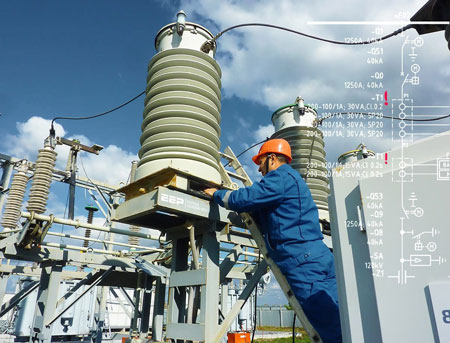
Current Transformer Simulation
Current transformer simulation models how CTs behave under electrical load, helping engineers test system performance, accuracy, and safety. It’s vital for power system design, fault analysis, and protective relay coordination.
What is Current Transformer Simulation?
Current transformer simulation is the virtual modelling of CT behaviour in electrical systems.
✅ Accurately predicts CT performance under various load and fault conditions
✅ Helps design, test, and validate protective relay systems
✅ Enhances power system safety, measurement, and fault analysis
Current transformer simulation is critical for industrial electricians, as it allows for accurate analysis and troubleshooting of electrical systems without disrupting operations. Understanding how to simulate devices ensures system reliability, optimizes power distribution, and upholds safety standards in complex industrial environments. This article explores the principles of simulation, its practical applications, and best practices for using simulation tools effectively—empowering you to tackle electrical challenges with confidence. Understanding the function of a transformer is fundamental before diving into how CT simulations model electrical behavior in complex power systems.
Electrical Transformer Maintenance Training
Substation Maintenance Training
Request a Free Training Quotation
The Role of Simulation Software and Tools
Accurate current transformer simulation has become essential for engineers and designers working with power systems. These simulations provide valuable insights into how CTs operate under different conditions, helping optimize their performance and ensure real-world reliability. By combining advanced software tools with precise modeling techniques, engineers can predict device behavior more accurately. In real-world applications, especially in substations, electrical substation transformers play a critical role, and simulating their CTs helps ensure fault detection and relay protection accuracy.
For example, when simulating a high-voltage transformer in a power plant, engineers can anticipate how it will respond during peak load hours and adjust parameters to prevent unexpected failures. This proactive approach saves time, prevents downtime, and enhances system reliability.
Current Transformer Simulation – Comparison Table
| Feature | Real CT Testing | Software-Based Simulation | Hardware-in-the-Loop (HIL) Simulation |
|---|---|---|---|
| Purpose | Validates physical CT performance | Models CT behavior in virtual systems | Combines real-time CT data with digital simulation |
| Accuracy | High (actual measurements) | High, but depends on model fidelity | Very high with real-time data feedback |
| Cost | Expensive (equipment, setup) | Low to moderate | High (specialized equipment required) |
| Safety | Involves high-voltage risks | Completely safe | Safe but requires interface isolation |
| Flexibility | Limited to available CT types | Highly flexible (any rating or class) | Flexible, but constrained by hardware interfaces |
| Time Efficiency | Time-consuming setup and testing | Fast simulations with repeatable conditions | Moderate, real-time capable but setup-intensive |
| Use in Relay Coordination | Manual testing with actual CTs | Simulates relay response accurately | Real-time dynamic testing with actual relays |
| System Fault Analysis | Limited to historical or lab conditions | Models various fault scenarios and load flows | Real-time fault injection and CT reaction monitoring |
| Training & Education | Less practical for classrooms | Ideal for training and learning environments | Suitable for advanced engineering education |
Understanding Core Saturation Effects
Core saturation is a crucial phenomenon in operation. When a CT’s magnetic core becomes saturated, its ability to transform current accurately diminishes, leading to distorted outputs and potentially compromising protective systems. This issue is especially common during fault conditions or high-load scenarios.
To illustrate, imagine a manufacturing plant experiencing a short circuit. If the CT’s core becomes saturated, the protective relays may receive incorrect readings, delaying their response. Simulating core saturation allows engineers to predict these issues and design CTs that can withstand extreme conditions. CT simulations are especially valuable when working with high-voltage transformers, where performance under stress must be precisely analyzed without risking actual equipment.
Ensuring Accuracy Through Error Analysis
Another critical aspect of CT simulation is ensuring accuracy. Discrepancies between simulation results and real-world performance can lead to inefficiencies or even failures in applications where precision is non-negotiable.
Error analysis plays a key role here. By comparing simulated data with experimental results, engineers can identify potential sources of error, such as inaccurate material properties or overlooked nonlinearities. This process improves modeling techniques and ensures that simulations remain a reliable tool for guiding system design. Engineers designing CTs also benefit from understanding key physical components, like the transformer core, since core properties directly affect saturation and modeling accuracy.
Practical Applications and Troubleshooting
Current transformer simulation goes beyond design—it plays a vital role in troubleshooting and system optimization. For instance, in renewable energy systems, CT simulations help fine-tune the integration of solar and wind energy into existing grids. In industrial facilities, simulations can diagnose issues like insulation breakdown, overvoltage conditions, and overheating before they escalate into costly problems.
One real-world example involves identifying thermal inefficiencies in an industrial substation. By simulating different load conditions, engineers can pinpoint areas where excessive heat builds up and adjust the system to improve cooling and prevent equipment failure. For effective CT testing in the field, condition data from maintenance inspection windows on transformers can validate simulation results and improve long-term reliability.
Beyond the Design Phase
The benefits of simulation extend well beyond initial design. In metering applications, simulations help ensure that CTs provide precise readings, even when load conditions fluctuate throughout the day. In protective systems, accurate simulations prevent malfunctions by ensuring relays receive correct input signals, minimizing false trips or failures to respond during emergencies.
This versatility demonstrates how simulation supports both innovation and day-to-day operational excellence, making it an indispensable tool in modern electrical engineering.
Frequently Asked Questions
How can I simulate a CT in MATLAB or Simulink?
To simulate a CT in MATLAB or Simulink, you need to model its core and windings accurately. Use coupled inductors or mutual inductance blocks to represent the primary and secondary windings, specifying parameters such as the turns ratio and impedance. Magnetic core properties—such as permeability, cross-sectional area, and core length—should also be defined. Include nonlinear effects like core saturation and hysteresis using lookup tables or built-in Simscape components. Don’t forget to model the secondary load impedance, as this affects the CT’s performance.
What parameters are critical for accurate current transformer simulation?
Critical parameters include the turns ratio, core permeability, core area, and saturation flux density. Other key factors are winding resistance, leakage inductance, and the coupling coefficient. The burden (load impedance) connected to the secondary side must be accounted for, as it influences accuracy. Additionally, consider the CT’s frequency response and excitation current, which accounts for core losses.
How does core saturation affect a CT?
Core saturation occurs when the magnetic core reaches its flux density limit, causing nonlinear behavior. This results in distorted outputs and can impact protective systems. Simulations capture this effect using the B-H curve, which relates magnetic flux to field intensity. You can use Simscape blocks or custom MATLAB equations to represent these nonlinearities.
What are the common challenges in CT simulation?
Common challenges include failing to account for nonlinearities such as saturation and hysteresis, using incorrect parameter estimates, and misrepresenting the secondary burden impedance. Numerical instabilities can also arise from poor solver configurations or time step sizes. Additionally, neglecting frequency-dependent effects like eddy currents can compromise the accuracy of the simulation.
How do I validate a CT simulation against real-world data?
To validate a simulation, compare its results with manufacturer-provided specifications for ratio error, phase angle error, and saturation characteristics. Laboratory tests using controlled sinusoidal and transient inputs can also confirm accuracy. Comparing the transient response during fault scenarios helps ensure the model aligns with real-world behavior. Field measurements from actual installations serve as a practical benchmark for confirming simulation fidelity.
Current transformer simulation is a multidimensional process that combines advanced software, meticulous modeling, and real-world validation. By leveraging these tools, engineers can design CTs that exceed performance expectations and contribute to the efficiency and stability of modern power systems. As simulation technologies evolve, the potential for innovation in CT design and application will only grow, paving the way for more reliable and sustainable energy solutions.
Related Articles

Portable Current Transformer - Essential Electrician Tool
Portable current transformer for clamp-on CT testing, temporary metering, and power monitoring; supports AC/DC measurement, handheld diagnostics, IEC accuracy classes, flexible Rogowski coils, and safe, non-intrusive load studies in industrial maintenance.
What Is a Portable Current Transformer?
A portable clamp-on CT for non-intrusive current measurement, temporary metering, and field diagnostics.
✅ Clamp-on, non-intrusive AC/DC current measurement
✅ Temporary metering and load studies on live circuits
✅ IEC accuracy classes; handheld, rugged, safe
A portable current transformer (PCT) provides a reliable way to measure and monitor electrical flow in challenging environments. Understanding this tool is crucial for maintaining safety, optimizing system performance, and ensuring compliance with strict industry regulations. In modern electrical engineering, PCT has become an indispensable tool for precision monitoring and measuring electrical systems. Compact, reliable, and versatile, this device is designed to provide accurate electrical flow readings while maintaining ease of transport and installation. Its use spans a range of applications, from diagnosing electrical faults to monitoring power consumption in industrial and residential settings. For foundational context, see the overview of what a current transformer is and how it relates to portable designs for field measurements.
Electrical Transformer Maintenance Training
Substation Maintenance Training
Request a Free Training Quotation
The Convenience of Clamp-On Designs
One of the defining features of PCT is its ability to combine functionality with mobility. Traditional transformers often require significant installation effort due to their bulky nature and fixed configurations. In contrast, portable models, including the widely popular clamp-on current transformer, eliminate the need for complex wiring or system shutdowns. The clamp-on design allows engineers to measure by simply attaching the transformer to a conductor, offering unparalleled convenience and efficiency. This capability is particularly advantageous when time and accessibility are critical factors. Clamp-on units are a subset of the broader family of current transformers that enable non-intrusive measurements during commissioning work.
Innovative Split-Core Technology
The adaptability of PCT is further enhanced by innovations like the split-core design. Unlike conventional solid-core transformers, split-core models can be opened and fitted around an existing conductor without the need to disconnect or reroute cables. This makes them ideal for retrofitting projects and temporary monitoring setups. Moreover, the lightweight and compact nature of split-core PCTs ensures they are easy to handle, even in confined or hard-to-reach locations. For applications involving leakage and earth-fault detection, engineers often reference the core-balance current transformer concept to validate installation choices.
Reliable Power Supply for Flexibility
A reliable power supply is another essential component that ensures the effective functioning of a PCT. These devices typically require minimal power to operate, making them compatible with battery packs or other portable energy sources. This feature is especially useful in fieldwork or remote areas where access to a stable electrical grid may be limited. The ability to rely on portable power solutions adds to the versatility and practicality of these transformers, further cementing their value in a wide range of applications. In portable test kits, PCTs are considered part of the wider class of instrument transformers that condition signals for safe metering in the field.
Driving Energy Efficiency with Real-Time Insights
PCTs also play a pivotal role in the growing demand for energy efficiency. With the increasing emphasis on monitoring and optimizing power usage, these devices provide real-time insights into electrical consumption patterns. Their ability to measure high accuracy without disrupting operations enables industries to identify inefficiencies and implement solutions to reduce energy waste. In this context, PCTs contribute to both cost savings and environmental sustainability. Selecting an appropriate current transformer ratio ensures readings remain within instrument range while maintaining accuracy at typical load currents.
The Role of Digital Technology in Modern PCTs
The integration of digital technologies has further revolutionized the capabilities of PCT. Many modern models come equipped with features such as wireless data transmission and advanced analytics. These capabilities allow users to monitor electrical systems remotely and gain deeper insights into system performance. By combining portability with cutting-edge technology, PCTs continue to evolve in ways that meet the demands of an increasingly connected and data-driven world. Before deployment, teams often validate sensor behavior with a current transformer simulation to anticipate saturation and dynamic response under transients.
Frequently Asked Questions
What does a portable current transformer do?
A PCT is used to measure the electrical flowing through an electrical circuit without making direct electrical contact. It works by converting the high electrical flow from the primary conductor into a proportional, lower electrical flow in its secondary winding, allowing it to be safely measured with standard instruments like ammeters or voltmeters. This is particularly useful for industrial electricians who need to measure electrical flow in live systems, offering a safe, non-invasive method for monitoring electrical systems. This function differs from a potential transformer, which scales voltage for measurement rather than electrical flow in similar monitoring scenarios.
How to make a portable current transformer at home?
Making a PCT at home requires basic components and some knowledge of electrical theory. Here’s a simple method:
- Core material: Use a magnetic core, typically a ferrite or iron core, that can handle the magnetic flux.
- Primary coil: The primary conductor is either passed through the core or wrapped around it. The primary coil may be a single turn or just the wire you want to measure.
- Secondary coil: Wind several turns of insulated wire around the core. The number of turns determines the electrical flow transformation ratio (e.g., a 1:100 ratio means 100 turns in the secondary for every turn in the primary).
- Insulation: Proper insulation between the primary and secondary coils is necessary to prevent electrical hazards.
- Once assembled, you can connect the secondary coil to a measurement device like an ammeter to measure the electrical flow through the primary conductor.
How to select the right PCT for electrical measurements?
When selecting the right PCT for electrical measurements, it's important to consider several key factors. First, determine the electrical flow rating based on the maximum electrical flow expected in the circuit. Ensure the CT can handle this without exceeding its capacity. Accuracy is another critical factor; choose a CT that meets the precision required for your specific measurements. The rated burden of the CT should also be matched to the measurement instrument’s input impedance to ensure accurate readings. Additionally, consider the size and portability—if you're working in a confined space or need to carry the CT to various locations, look for a lightweight and compact model. Finally, select the appropriate core type, such as wound, split-core, or toroidal, based on your installation needs, whether you require a permanent setup or one that can be easily clamped around live conductors.
What are the safety precautions when using a portable current transformer?
Using a PCT safely requires taking specific precautions. First, ensure the CT has proper insulation to avoid accidental contact with live electrical components. Always check that the CT is rated for the voltage and electrical flow of your system to prevent overloading, which could damage the device or cause hazardous conditions. When working with a portable CT, never open the secondary circuit under load, as this can generate dangerous high voltages. Additionally, always ground the secondary side of the CT to reduce the risk of electric shock. Wear appropriate protective gear, such as insulated gloves and rubber mats, to prevent accidents, and inspect the CT for any visible damage before use. Following these precautions ensures the safe operation of the portable CT and minimizes the risk of electrical hazards.
What are the advantages of using a PCT?
The use of a PCT offers several key advantages. One of the main benefits is safety—portable CTs allow electricians to measure electrical flow in live circuits without direct contact, reducing the risk of electrical shock. These devices are also highly portable, making them easy to transport and use in different environments, whether for temporary monitoring, diagnostics, or maintenance tasks. Portable CTs are non-invasive, particularly split-core types, which can be easily clamped around existing wiring without disconnecting the circuit. This feature saves time and avoids system downtime. Moreover, portable CTs are generally cost-effective for applications that require occasional measurements, as they provide a more affordable alternative to permanent electrical flow. Finally, their versatility makes them suitable for a range of applications, from industrial machinery and commercial buildings to residential systems.
A PCT is a compact, lightweight device used for measuring electrical flow in various applications. It is designed to be easily carried and applied in field settings or temporary installations, making it ideal for situations where a permanent CT installation is impractical. PCTs are commonly used in the maintenance, testing, and troubleshooting of electrical systems. They function by encircling a conductor and transforming the high electrical flow into a lower, measurable value, which can be safely monitored using standard instruments. Their portability and ease of use make them essential tools for electrical professionals.
Related Articles
Electrical Transformers News
Electrical Transformers Media
Electrical Transformers Articles From ET Magazine

The Role of Transformer Oil Alternatives in Improving Safety and Environmental Sustainability
The Growing Need for Safer and Greener Transformer Oils
Transformer oil plays a vital role in the operation and longevity of power transformers, providing insulation, cooling, and arc suppression. Traditionally, mineral oil has been the industry standard due to its effective dielectric properties and cost-efficiency. However, growing concerns about fire safety, environmental impact, and sustainability have driven the search for alternative transformer oils. Synthetic esters, natural esters (vegetable-based oils), and silicone fluids are emerging as viable substitutes, offering enhanced fire resistance and biodegradability while maintaining reliable performance. As utilities transition to greener and safer solutions, the role of transformer oil alternatives is becoming increasingly important in ensuring a more resilient and sustainable energy infrastructure.
Limitations of Traditional Mineral Oil
While mineral oil has been widely used for decades, it presents several significant drawbacks. One of the primary concerns is its flammability. Mineral oil has a relatively low fire point, making transformers susceptible to fire hazards, particularly in densely populated areas or critical infrastructure locations. Additionally, in the event of a spill or leakage, mineral oil poses environmental risks due to its slow biodegradation and potential for soil and water contamination. Regulatory agencies and environmental organizations are tightening restrictions on the disposal and handling of mineral oil, pushing utilities to explore safer alternatives.
Another challenge associated with mineral oil is its inability to handle high thermal stress over long periods. As transformers operate under increased loads due to rising energy demands, the thermal stability of insulation fluids becomes a key factor in extending equipment lifespan. Given these limitations, the industry is gradually shifting toward synthetic and natural ester-based alternatives that provide superior fire safety and environmental benefits.
Read the full article in the Transformer Technologies Special Edition

Enhancing Transformer Resilience: Fire Barriers and Safety Measures in Modern Substations
The Growing Concern of Transformer Fire Risks
An Electrical Substation Transformer is a critical component of modern substations, playing a vital role in the transmission and distribution of electricity. However, due to the high-voltage operations, flammable insulation materials, and exposure to extreme weather conditions, transformers are at significant risk of fire and explosions. A solid foundation for transformer safety starts with thoughtful electrical substation design, ensuring layout and equipment placement mitigate fire risk. The consequences of transformer fires can be severe, leading to equipment damage, power outages, environmental hazards, and, in some cases, loss of life. As utilities expand their grids and integrate renewable energy sources, the need to enhance transformer resilience against fire hazards has become more pressing than ever. Proper substation grounding protocols protect transformers and personnel from electrical faults and fire-related events.
Implementing fire barriers and adopting advanced safety measures are crucial to mitigating risks and ensuring an uninterrupted power supply. Understanding the causes and impacts of a substation explosion is essential to improving overall infrastructure resilience.
Causes of Transformer Fires and Explosions
Transformer fires are typically caused by insulation failure, short circuits, overheating, or external environmental factors such as lightning strikes. One of the primary causes is the degradation of transformer insulating oil, which can break down under high temperatures, producing flammable gases that increase the risk of ignition. Electrical arcing, caused by insulation breakdown or mechanical faults, generates extreme heat that can lead to explosions. Robust substation protection systems are critical in isolating faults and minimizing fire propagation.
Overloading transformers beyond their design capacity also contributes to excessive heating, accelerating insulation failure and increasing fire risks. External impacts, such as earthquakes, vandalism, or accidental collisions, can sometimes trigger catastrophic failures.
Read our What is a Substation article for a deeper understanding of substation technology. Consistent electrical substation maintenance is the key to identifying potential hazards before they lead to costly failures.
You can also visit our Substation Maintenance training course.
Visit our Electricity Forum Electrical Substation Channel Page.
Read the full article in the Transformer Technologies Special Edition

Navigating the Transformer Supply Crunch: Strategies for Utilities Amidst Global Shortages
The Growing Transformer Supply Crisis
The global transformer supply chain is facing unprecedented challenges, with utilities worldwide struggling to procure essential equipment due to material shortages, manufacturing delays, and logistical constraints. Transformers are the backbone of electrical transmission and distribution networks, and their scarcity poses significant risks to grid reliability, infrastructure expansion, and system resilience. As demand continues to outpace supply, utilities must adopt strategic approaches to mitigate risks, ensure the timely acquisition of transformers, and maintain operational stability.
Factors Driving the Transformer Shortage
Several factors contribute to the current transformer supply crunch. Raw material shortages, particularly of electrical steel, copper, aluminum, and insulating oils, have led to significant procurement challenges. Electrical steel, essential for transformer cores, has experienced price volatility due to rising global demand and production limitations. Manufacturing bottlenecks have further exacerbated the issue, with many transformer manufacturers operating at full capacity, constrained by workforce shortages and aging production facilities. Lead times for large power transformers, which once averaged 12 to 18 months, have now extended well beyond two years in some cases.
Geopolitical tensions and trade challenges have also played a role in disrupting supply chains. Tariffs, export restrictions, and geopolitical conflicts have made it difficult for utilities to source transformers from traditional suppliers, leading to increased costs and uncertainty. Meanwhile, the global push for electrification, renewable energy integration, and grid modernization has driven demand to unprecedented levels, placing additional strain on an already fragile supply chain. Logistical constraints, including shipping delays, container shortages, and port congestion, have further hindered the timely delivery of transformers, compounding the issue.
Read the full article in the Transformer Technologies Special Edition

MITIGATING TRANSFORMER FAILURES: ADVANCED MONITORING AND MAINTENANCE STRATEGIES
Power transformers are critical assets in electrical transmission and distribution networks. Their failure can lead to widespread outages, costly downtime, and potential safety hazards. As transformers age and operate under varying electrical and environmental stresses, degradation becomes inevitable. However, through advanced monitoring techniques like Dissolved Gas Analysis (DGA) and Frequency Response Analysis (FRA), utilities can proactively identify early signs of failure, enabling preventive maintenance and extending transformer service life.
Dissolved Gas Analysis (DGA): A Window into Transformer Health
DGA is a well-established diagnostic method used to detect transformer insulation and oil degradation by analyzing the gases dissolved in transformer oil. When internal faults occur, electrical and thermal stresses break down the oil and solid insulation materials, generating gases that dissolve in the oil. By examining the composition and concentration of these gases, engineers can infer the nature and severity of the developing faults.
The primary gases analyzed in DGA provide insights into different fault conditions:
- Hydrogen (H₂) indicates low-energy partial discharge activity
Methane (CH₄) suggests overheating of oil at moderate temperatures. - Ethane (C₂H₆) and Ethylene (C₂H₄) signify thermal degradation of oil at high temperatures.
- Acetylene (C₂H₂) is strongly associated with arcing and electrical breakdowns.
- Carbon Monoxide (CO) and Carbon Dioxide (CO₂) indicate degradation of cellulose-based insulation, such as paper and pressboard.
Read the full article in the Transformer Technologies Special Edition
Sign Up for Electricity Forum’s Electrical Transformers Newsletter
Stay informed with our FREE Electrical Transformers Newsletter — get the latest news, breakthrough technologies, and expert insights, delivered straight to your inbox.
Electricity Today T&D Magazine Subscribe for FREE

- Timely insights from industry experts
- Practical solutions T&D engineers
- Free access to every issue






